Modern cars are like ex-wives. They’re not all bad. The problem is that the good is often outweighed by the bad. Which is made tragic by the fact that it didn’t have to be this way.
Here are some for-instances:
Power . . . vs. weight –
There is no such thing as underpowered new car.
Today’s economy cars have more power under their hoods than most family cars used to have under theirs – and today’s family cars have more power than high-performance muscle cars used to have.
There are very few new cars of any type with engines that makes less than 130 horsepower (a ‘70s-era economy car like a VW Beetle had about 60 horsepower) and cars with 300-plus horsepower engines are as common today as 300 horsepower was rare and exotic as recently as the ‘90s.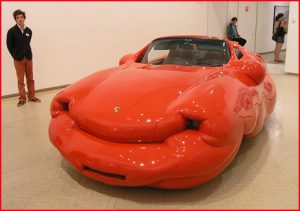
But all this power is chained down by a counterbalancing uptick in weight.
The average 2018 model year car is several hundred pounds heavier than its ’90s-era equivalent, which is ironic because over the past 20-something years, heavy cast-iron engines have been replaced by aluminum blocks and heads and exterior body panels are made of much thinner and much lighter materials, including plastic. Some new cars – and trucks – have bodies made entirely out of aluminum.
But they’re still heaver than their equivalents from 20 years ago.
And they’re heavier because the underlying structure has to be – in order to pass all the government-mandated crash tests. New cars are certainly safer places to be in – if you wreck. If you don’t, much of the horsepower you’ve got under the hood is wasted carting around all that extra weight.
If new cars could be made as light as cars used to be, today’s economy cars would be quicker than yesterday’s sports cars and today’s performance cars would be quicker than yesterday’s exotics.
Lower maintenance . . . vs. higher cost –
Other than oil and filter changes and tire rotations, modern cars usually don’t need much in the way of regularly scheduled maintenance for the first several years.
This not only saves money, it saves time. Before computer-controlled engine management systems (and fuel injection) came online in the mid-1980s, it was routine to have to take you car in for a tune-up in Fall – and then again in Spring.
In between, the car often needed fiddling with, too – because mechanical things (like a carburetor) tend to get out of adjustment more often.
Electronic things usually work – or they don’t. There’s rarely an in between. And therein lies the rub.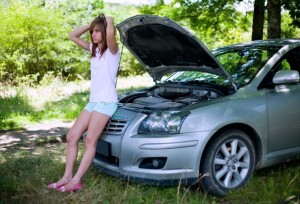
Modern cars require less regular maintenance – and less often – but when a component (often, electrical) goes on the fritz, there’s no adjusting it. Only replacing it. And almost everything in a modern car is controlled electronically. Modules, sensors – and so forth.
Older, pre-computer cars can be nursed along almost indefinitely – and inexpensively. Modern cars work – until they don’t.
You’re less likely to find yourself stranded by a new car – at least, until it becomes an older car. But when it gets older and something does go wrong, it’s much more likely you will be stranded, because Band-Aiding it and limping the car home has become mostly a thing of the past.
Fantastic headlights . . . vs. terrible visibility –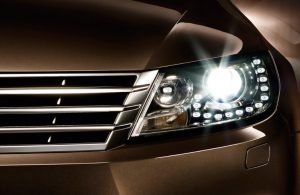
For most of the history of the automobile, driving at night was dangerous because it was hard to see where you were going – because the illumination provided by the headlights cars came with all the way through the ’90s were about as effective as holding a candle out the window . . . vs. the darkness-cancelling candlepower provided by modern car lighting systems.
It was easy – in the past – to outdrive the headlights. Today’s cars light up the road long before your car actually gets to that spot in the road – and by the time it does get to that spot, the beam cast by the car’s headlights is already another 100 yards down the road. If you hit something, it won’t be because you didn’t see it.
Unless of course you couldn’t see it. 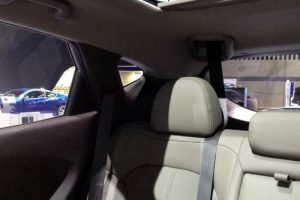
Daytime visibility is much worse in most new cars – especially to the side and to the rear – because of sightline-occluding roof pillars that are often 2-3 times as thick as they were in the past (to comply with government roof-crush standards) and also because of tall, anti-whiplash headrests that block the driver’s view to the rear, through glass that’s often much smaller – and much more sharply slanted – than it was in cars built before the ’90s.
They don’t rust . . . but they do tear –
Modern cars are less vulnerable to rust – especially structural rust – than cars used to be, chiefly because modern cars are better put-together and also better protected against rust at the factory.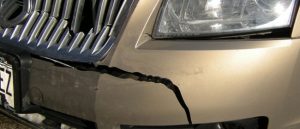
It’s more likely that the engine will wear out before the body – or at least, the frame – does.
On the downside, all modern cars have frighteningly fragile plastic front and rear “fascias” that are easily torn and usually just thrown away when that happens. These fascias – which are effectively the whole front (or rear) end of the car – are often held on by just a few plastic rivets. A relatively minor impact can and often does shear the entire thing off the car, leaving it both undriveable and expensive to fix.
One of the main reasons car insurance premiums have gone sky-high is precisely because what used to be fixable with a dent puller and some body putty now involves replacing an entire front (or rear) clip, often along with all the fragile (also usually made of plastic) trim pieces, such as the grille and headlight assemblies.
These latter can cost several hundred bucks each.
Metal bumpers could be bumped – without needing to be replaced. But chrome-plating has become too expensive because of environmental regs… and so we have even more expensive plastic fascias instead.
. . .
Got a question about cars – or anything else? Click on the “ask Eric” link and send ’em in!
If you like what you’ve found here please consider supporting EPautos.
We depend on you to keep the wheels turning!
Our donate button is here.
If you prefer not to use PayPal, our mailing address is:
EPautos
721 Hummingbird Lane SE
Copper Hill, VA 24079
PS: Get an EPautos magnet (pictured below) in return for a $20 or more one-time donation or a $5 or more monthly recurring donation. (Please be sure to tell us you want a sticker – and also, provide an address, so we know where to mail the thing!)
My latest eBook is also available for your favorite price – free! Click here. 












I’ve never paid alimony to a vehicle that I USED to own and feel fairly secure that no court will ever order same.
Consider the “going away” cost for ex-wife #2 (the first one, sorry to say, especially for our respective kids, now in their 30s, passed away about eighteen months ago) is such that it causes me to reflect on what a high school chum, whom in college I partnered up with in a janitorial business to pay my way, said regarding the ‘fairer’ sex: “If it floats, flies, or f**cks, it’s CHEAPER to RENT!”. He’s never married, but he has the nice house he inherited from his late mother and several other properties, two aircraft, and a boat, and gets laid more often than Armstrong floor, in the past few years exclusively with attractive young women easily young enough to be his daughter (and considering how much he’s led the “Charlie Harper” lifestyle, that one might secretly be isn’t impossible!).
Me, I led the Good, decent lifestyle of a “family man” and upstanding member of the LDS Church, and I live in a humdrum small home in a Sacramento area suburb and drive a five y.o. Ford Focus and a beater pickup, and have to watch my ‘pfennigs’. I don’t regret my kids and grandkids, all of ’em, but it sure as hell ain’t good publicity for a young fellow to assume the risk and responsibilities of a family!
Hi Doug,
Amen to all of that. I’ve advised a couple of teen boys (my two best friends’ kids) about the perils of marriage, given the legal and social mess that’s been made of things. It is fine to commit to a woman – but getting the state involved is never a good idea. And if you do, you’ve signed a binding contract (on you) that the other party may unilaterally abrogate at whim – she feels differently – and the costs of that will be yours to bear.
Kids and parenting?
It seems to me that, to a great extent, parents are more like biological raw material which is then compelled to provide material benefit but without parental rights to direct and guide their offspring; the state is now the real parent as it has all the real authority.
You said it, Eric.
Hence ANOTHER reason why I’ve long gone Libertarian – I can’t think of any area where the Almighty State has intruded into folk’s personal lives than Family Law – and all to enrich greedy attorneys, conniving, gold-digging skanks, and maladjusted feminists whom no man with any standards would knock boots with anyway!
And yet both feminists and pontificating, religious nitwits lament as to WHY won’t MEN commit?
https://www.amazon.com/Men-Strike-Boycotting-Marriage-Fatherhood/dp/1594037620
I thought that there were candlepower limits on headlights and that they were matched decades ago. How can modern bulbs be brighter?
The federal lighting standard is very complex and is difficult to interpret even for some manufacturers and lighting specialists, but the feds say the maximum light output of headlamp systems, whether two-or four-light systems, is limited as follows:
1. Type 2 or 2A Lights—Upper beam limited to 20,000 to 75,000 candela per lamp. Lower beam limited to 15,000 to 20,000 candela per lamp.
2. Type 1 or 1A Lights—Upper beam limited to 18,000 to 60,000 candela per lamp.
This provides a pretty broad range. I’m more familiar with lumens as a unit of measurement for light output. Just to give you an idea of relative output, Most standard halogen headlights put out about 1300-1500 lumens per headlight. HID headlights put out about 2500-3000 lumens per headlight. LED headlights are most often somewhere in the middle, around 2000-2500 lumens per headlight. Of course, raw output is only one factor. The shape and throw of the beam can have more of an effect than the actual output, with a brighter but poorly designed headlamp providing less visibility than a dimmer but well designed one.
So why is it so difficult to get aftermarket HID headlights? The only ones I see are that strange looking blue/purple tinted color. Usually on some kid’s rattle can painted ricer that he dropped by cutting the springs…
Hi RK,
It’s not! I can get them for my ’76 TA, even. It may be necessary to upgrade to a higher-output alternator and other little things, but it’s very doable.
Proper HID systems simply have a number of components that make them prohibitively expensive. Even the optics and reflectors of the headlamps themselves have to changed for HID. This is why it is difficult to find them for a lot of cars.
At the same time I am not surprised something is out there for Eric’s TA which is from the time of sealed beams. The standardized sealed beam format means someone could make a proper HID system that would then fit many models. If they do all of the less than handful of sealed beam types they would fit every car made before 1986.
You forgot to mention the constant beepers and buzzers–not unlike an ex-wife–constantly blaring in your ear on many new cars.
My brother has a 2017 F-350. I hate driving it because of all the buzzers and nanny features that are all the rage these days. I’ll stick with my 2016 Tundra. It’s pre-Toyota “safety sense”. Just the way I like it. Screw the damn beeps and warnings. I’m aware of the situation. Leave me alone Uncle Sammy.